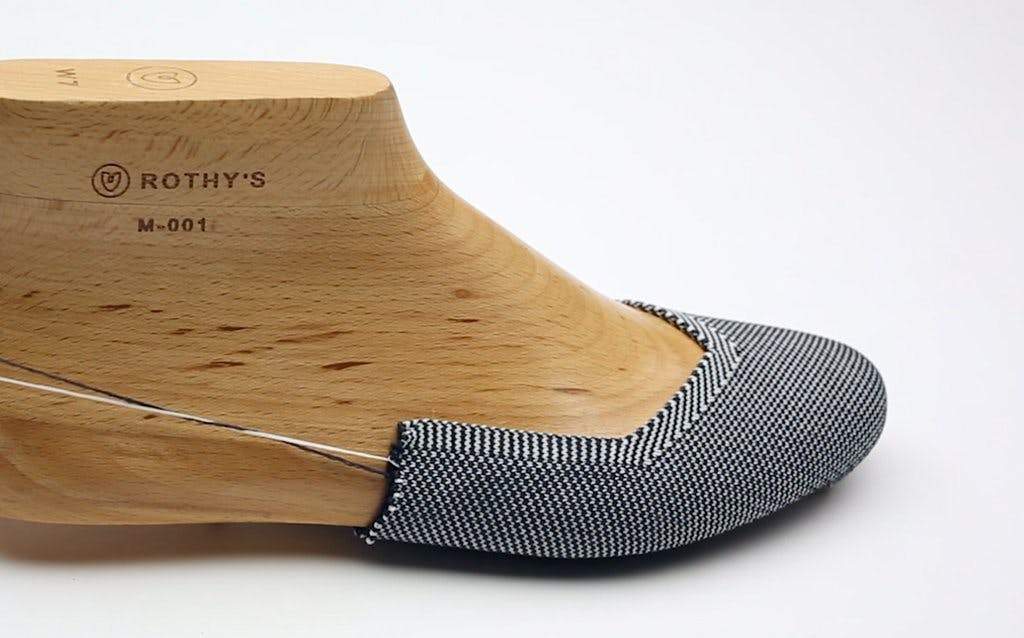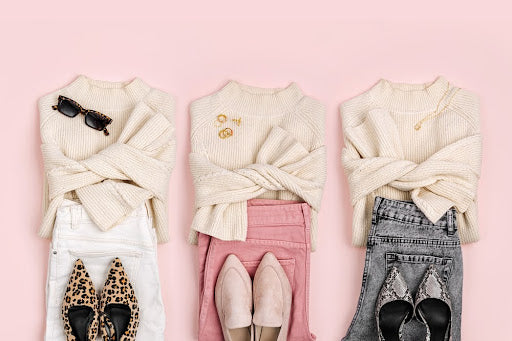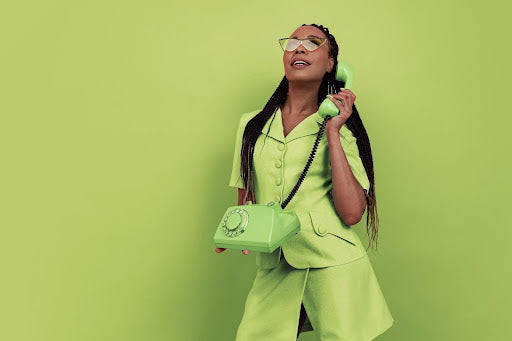3D Knitting: A Close Look at How Rothy’s are Made

One of the questions we’re often asked has to do with how we bring Rothy’s to life. Many of our customers assume they’re 3D-printed, but they’re actually 3D-knitted–and while those processes may sound similar, there are a few important differences between the two. Confused? Fear not. We’re here to walk you through it.

The recipe for our knitted shoes contains four main ingredients: time, engineering, manpower, and the technical process that knits them together. We’ll break them down one by one.
- Time. A designer imagines a color, pattern, shape or silhouette and translates that vision into a sample or digitized image. Once she’s happy with it, a programmer develops the exact design in the right software.
- Engineering. When the 3D knitting machine is programmed and properly set, an engineer runs the machine, adjusting all the little details that make your Rothy’s just right.
- Manpower. It takes a village–in this case, three people. The communication between designer, programmer, and engineer is crucial to the 3D knitting process, and getting it right takes time.
- Technical Process. A 3D knitting machine has thousands of tiny needles that, once programmed, race back and forth to create a perfectly-made flat knit shoe. (AKA, your Rothy’s.)
Where did all this come from? 3D knitting has been around since the 90s, when it was designed to create tubular, seamless knit items (think hosiery). Since then, there have been unbelievable technological advances, with the bulk of innovation just beginning. That’s one of the reasons we use it at Rothy’s.
On the other hand (or foot), 3D printing was designed much earlier, and while it’s been useful for tons of industries, the fashion industry is only just beginning to dip its toes into 3D printed goods. That’s because 3D printing takes a computer aided design (CAD) and slices it into thousands of layers, allowing a printer to recreate the item on a 3D printer. These printers are incredibly expensive and therefore, not very scalable for producing apparel–at least at the moment.
We’re excited about 3D knitting because we’re just at the tip of the technology curve. 3D knitting gives us the ability to use technical fibers, organic fibers–literally anything–to create cute knitted shoes with extremely low waste. We knit those shapes to their exact size, so we can cut clutter on the factory floor. That kind of precision and efficiency is good for the environment.
Plus, 3D knitting lets us hone in on fit, design, and color, producing knitted shoes with no seams. That translates to comfort and a consistent fit – in other words, perfect Rothy’s every time.
























